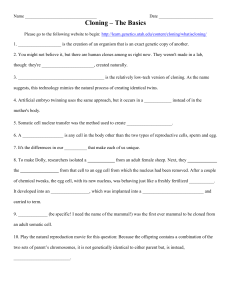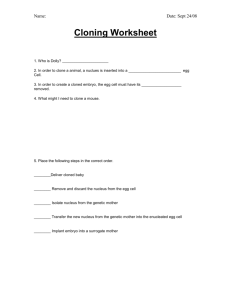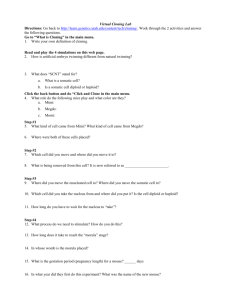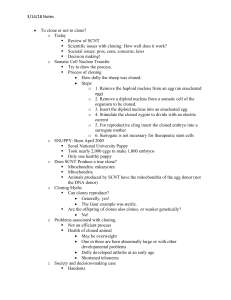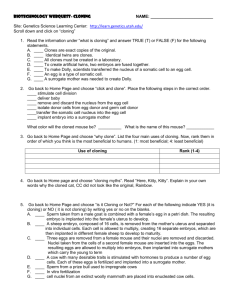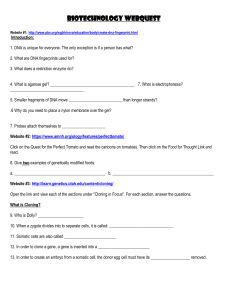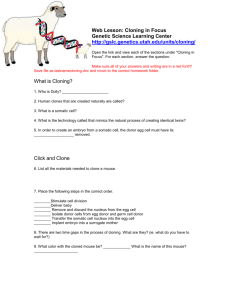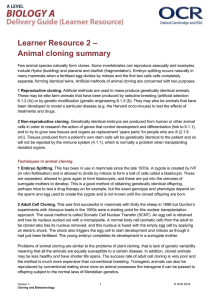Human Cloning - West Branch Schools
advertisement
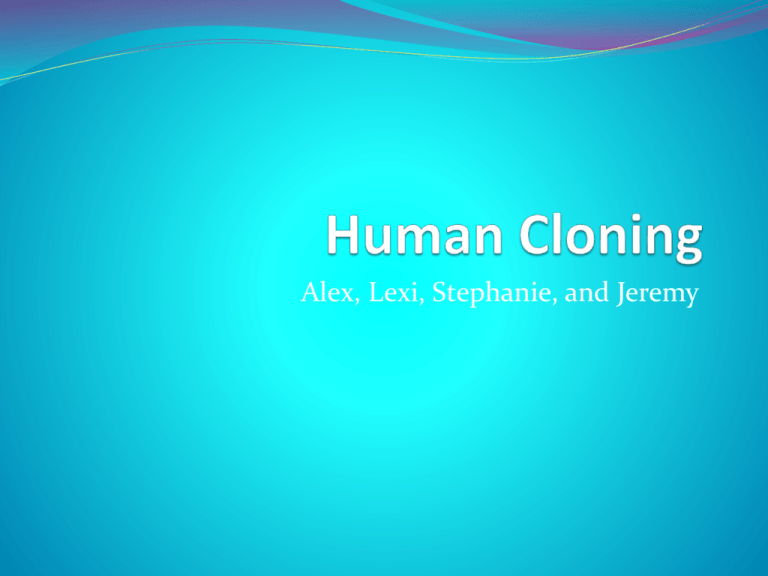
Alex, Lexi, Stephanie, and Jeremy Definitions Human Cloning- The creation of a genetically identical copy of a human. Somatic cell- Any cell from the body of a multicellular organism excluding the reproductive cells. Embryo- An organism in its early stages of development. Nuclear Transfer- A form of cloning, steps involve oocyte and injecting the nucleus to be cloned. Clone- A plant or animal that is grown from one cell of its parent and that has exactly the same genes. Background No one has ever reported of attempting to clone another human, however people have succeeded using animal cloning. Animal cloning is a long process of somatic cell nuclear transfer. Scientists then take a somatic egg with is a non sperm egg cell from an adult animal. They then take another egg from the same animal and remove the nucleus from the egg replacing it with the somatic cell nucleus. It then makes the egg develop into a normal egg. Cons Many things could go wrong. Clones would not have the right to their own body. Cost Violating Human rights Going against religion Pros Couples with complications in having children can clone a child instead of adopting. Endangered species can be cloned to help repopulate the species. When a person with a terminal illness in which they will need a body part they can have a complete copy of their own part instead of another persons Works Cited "Human Cloning Foundation Home Page." Human Cloning Foundation Home Page. N.p., n.d. Web. 27 Oct. 2013. <http://www.humancloning.org/>. "How Human Cloning Will Work." HowStuffWorks. N.p., n.d. Web. 27 Oct. 2013. <http://science.howstuffworks.com/life/genetic/humancloning.htm>. http://www.fda.gov/animalveterinary/safetyhealth/AnimalCloning/de fault.htm "Animal & Veterinary." Animal Cloning. N.p., n.d. Web. 27 Oct. 2013. <http://www.fda.gov/animalveterinary/safetyhealth/AnimalCloning/d efault.htm>.
